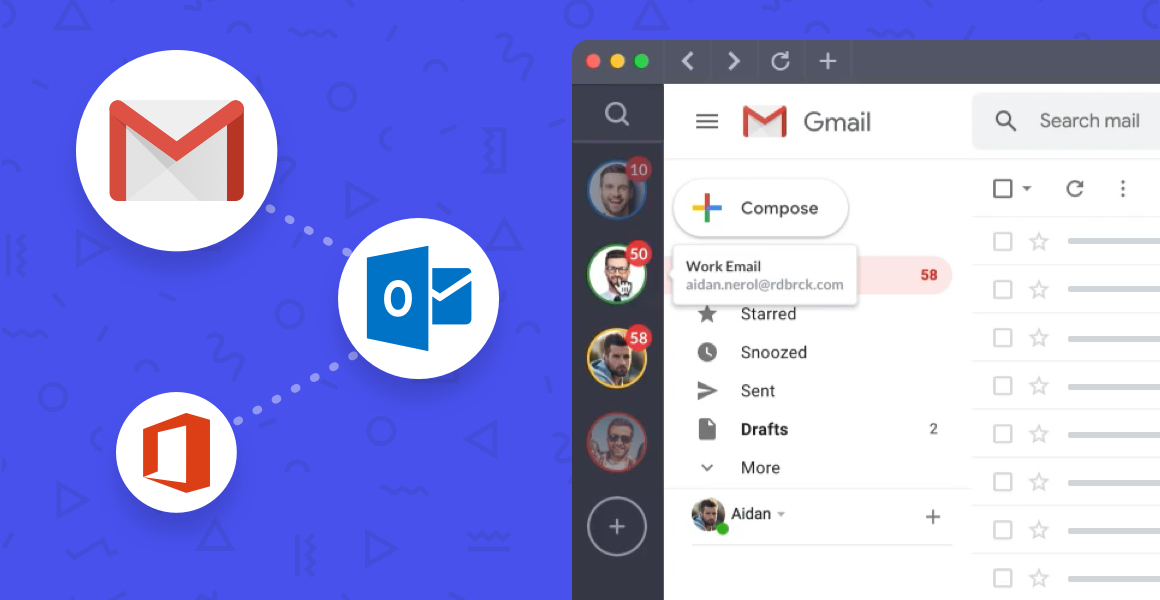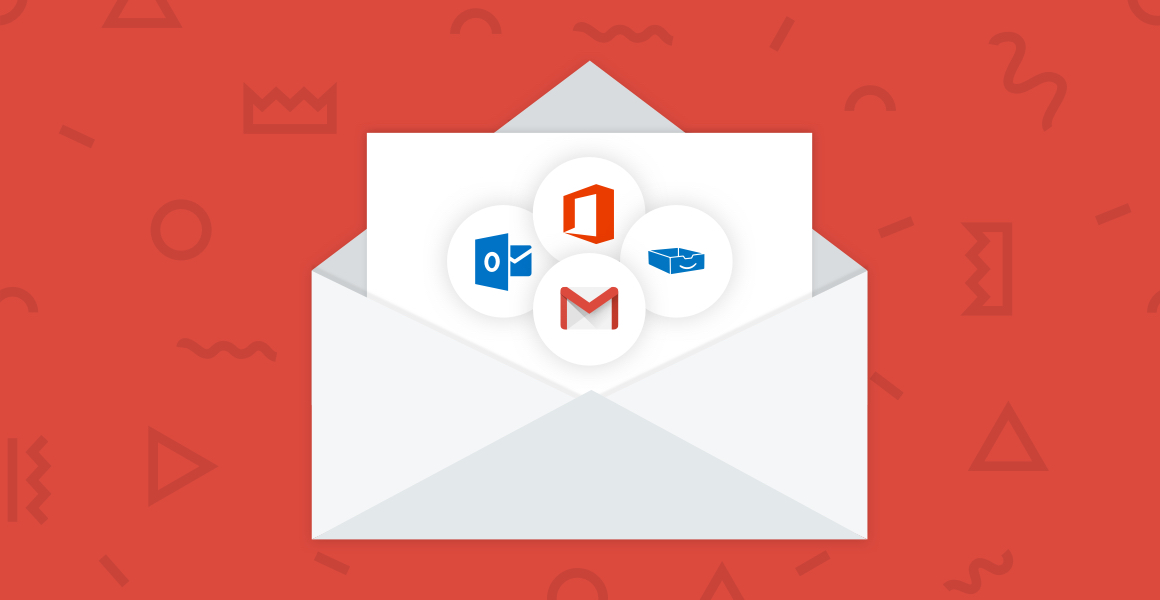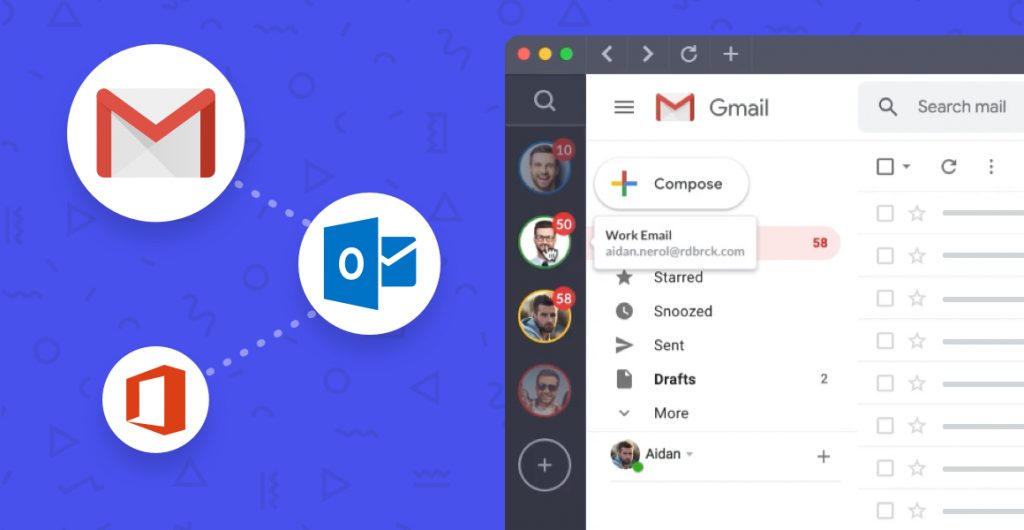Are you staring down hundreds of emails a day and not sure where to begin? Achieving inbox zero can be a very daunting task, and if you’re looking at a cluttered inbox, you might even say it’s impossible. A full inbox is a stress point for everyone, as the mountain of unread emails becomes infinitely larger. Before you know it, you’re drowning in spam emails, calendar invites, and anything important has sunk to the bottom.
So what’s the secret to managing your email and, with it, your sanity? Everyone wants to know how to achieve that perfect state of email enlightenment and inbox zero. There’s no elusive secret to managing your inbox, but there are significant steps you can take to diminish the mountain of emails you’ve accumulated. If you can tackle your email efficiently, you’ll be more productive at work and reading through your inbox won’t be a daily struggle.
1. Start thinking about email differently
The first step is to start thinking about email differently and forget the nightmare of an inbox that got you reading this article in the first place. Do you have emails that have been sitting in your inbox for weeks? Untouched and unread? In tribute to your new-found sanity, delete them. You should never let emails sit in your inbox for over 24h, and chances are, if they weren’t important a day ago, they probably aren’t important now. Reevaluate your strategy for managing emails and begin to think about your inbox in a new (more manageable) way.
It’s okay to feel a bit overwhelmed by your inbox: honestly, leaving a pending list of things you need to do is not an effective way to stay organized, nor should it be. How often do you lose track of important emails or realize you missed a deadline from several days ago because it got lost in the shuffle? When you’re visually overwhelmed by your inbox and too busy to manage it effectively, your productivity and diligence fall.
Immediately answering every email would solve all your email overload issues, but that is nearly impossible and inefficient. Instead, follow these simple steps to avoid a crowded inbox:
- If there are no action items to follow up on, archive the email — it’s only taking up space in your inbox.
- If you can reply quickly with a simple response, do that immediately! Don’t let that email soak in your inbox; just deal with it.
- We know you’re busy — If the email requires an extended, well-thought-out response, move it to a high priority folder or star the email, so you remember to come back to it later. Scheduling time to look over your inbox might help you delegate your priorities better and ensure you always remember to go back to your high-priority emails.
- Find an email aggregator. Managing multiple email accounts without feeling overwhelmed is nearly impossible and will only lead you to burn out. Make life a bit easier for yourself and download Shift to aggregate all your accounts in one place.

2. Declutter, then deep clean
This one sounds like a no-brainer but cannot be stressed enough. Decluttering your inbox is probably the most crucial step to decluttering your digital life. To truly deep clean your inbox, you need to accept step one and look at email differently. Nothing is tying you to the hundreds of emails that have gone undeleted in your inbox, but still, the act of erasing something forever is challenging for us to accept.
Deleting emails can be a difficult step for many, especially those who procrastinate, but evaluating what brings you joy might help you to let go. If you find it difficult to label your emails with ‘joy,’ look at it alternatively and think Is this causing me stress? If your answer is yes, delete it! Or take a second look and ask, Is this email relevant? Is there any reason to keep this? Most of the time, your answer will be no, seeing as only 38% of emails offer importance.
3. Don’t touch twice
Have you ever opened an email, decided you didn’t want to respond right away, and then remembered to go back to that email the next day? Maybe, you’ve got a wicked memory — but for most, emails go in one ear and out the other once seen. The ‘touch it once’ rule has outlived email, dating back to when the world ran through paperwork. When you ‘touch it once,’ you never touch it again, which forces you to avoid procrastination and deal with it immediately.
Break the habit of avoidance: face the spam and press ‘unsubscribe,’ send CC’d emails to a separate folder and let quick responses fly. Don’t let unread emails loom over your life.
4. Prioritize emails effectively
The question of prioritization and how to do it effectively is something that we have all asked ourselves. How do I prioritize and filter out what’s important when everything is important? Don’t worry; there are simple steps you can take to hammer down your priority list and start working more productively. The Eisenhower matrix is a widespread strategy for prioritization and the reason why: it really does work!
Urgency motivates people to complete their work, and any procrastinator knows that a sense of urgency is sometimes the only way to finish a project. You can organize your inbox according to the urgency and importance — building specific folders that will help you prioritize and avoid the urgency trap.
The Eisenhower Matrix is a strategy for productivity that will help you prioritize what is truly important. In this matrix, you visualize priorities in four separate categories:
- Urgent and important emails need to be responded to as soon as possible.
- Urgent and unimportant emails can be delegated to someone else.
- Non-urgent and important emails can go in a folder for later.
- Non-urgent and unimportant emails should be deleted from your inbox.
5. Treat email like a messaging service (but make it fancy)
Unnecessarily long emails that beat around the bush are far too common and stem from one habit: The unwavering urge to be overly polite in emails. Simply put, spending twice as much time drafting an email because you’re trying to be polite is a waste of your time and theirs. The reason for looking at your email as a messaging service is to get in the habit of writing concise, straightforward emails and leaving out the fluff.
Keeping it concise doesn’t mean you have to be rude. You can still squeeze in ‘have a nice day’ at the end and upkeep your manners. Compose emails like you would a text message: Short, concise, and to the point. Depending on your texting style, you might have to formalize it a bit and add some pleasantries here and there, but you should be able to get your point across in 5 sentences or less.
You don’t have to commit every email to this rule, but it’s a good baseline for easy responses that don’t require long, well-thought-out answers. You can get wordier if you’re writing out a proposal or fostering a partnership for your business, but for the most part, keep it brief.
6. Delete, unsubscribe, send to junk and take a breath
Let’s go on a deleting frenzy. Delete old calendar invites, old email threads, and any spam emails that are still lurking in your inbox. The only way to reach inbox zero is to press that delete button — over and over and over again — let the clutter go. On average, only 10% of your emails are pertinent, meaning the other 90% are just taking up precious space in your inbox.
Cut these emails off at the source and unsubscribe from the hundreds of newsletters clogging your inbox. Challenge yourself this week and unsubscribe from a newsletter every day — unless you genuinely (without a shadow of a doubt) believe you are benefiting from it. For recurring emails that don’t offer the beautiful ‘unsubscribe’ button, set up a filter that will usher them out of your primary inbox and into a separate folder. A few apps and extensions, like Sanebox and Unrollme, can help you do this automatically by sorting your inbox and filtering out anything unimportant.
Related Post: The Top 13 Tools to Maximize Email Productivity

7. Let go of the notion that you always need to reply
Avoid unnecessary conversations and keep one-word replies out of your email. Spam isn’t the only thing cluttering your inbox – you create clutter every time you send an unnecessarily long response or drag out an email past its point. When you’re shooting out emails like a loose cannon, it’s easy to forget that the more emails you send, the more responses you’ll receive — queue the overloaded inbox.
Back and forth conversations that require a thorough discussion should be kept out of email. Go old school and give them a phone call, send a text, or use a messaging system like Slack. Avoid making mistakes in your emails, sending irrelevant responses, or leaving anything unexplained.
- Don’t bother with one-word responses: Sending a quick ‘thank you’ is very polite, but it’s clogging up both your inbox and theirs.
- Proof-read: Double check that you haven’t made any spelling or grammar mistakes that could confuse the recipient.
- Check for mistakes: Read your email over before pressing send to ensure you have all the details correct: Time, place, date, etc.
- Use bullet points: Bullet points will make it easy to digest what you’re saying, and you can clearly list out action items to avoid rework.
- Attach references: The more references you attach, the lesser the chance that the recipient will have any questions, and this will just add to the clarity of your email.
8. Filter out distractions and focus on what’s relevant
If you were to invent the most annoying and inefficient email management system, you would probably design something that sends an obnoxious noise to your phone, commanding your attention and taking you away from important work. Unfortunately, that’s what we call email.
Sometimes the best thing you can do for your inbox is not letting it overwhelm you, whether that’s muting notifications or pausing your email flow — minimize distractions so you can focus on what’s most important.
Studies have found that people remember incomplete tasks twice as much as completed ones, leaving us in a state of anxiety when emails are opened and unanswered. Pausing the inflow of new things to add to your to-do list will decrease those stress levels and allow you to dive into deep work.
- Pause incoming emails: Download the app, Boomerang, and take a break from your email flow so you can tackle complex projects, distraction-free. If you pause your emails for chunks of the day, you can choose to unpause your flow when you have time to respond.
- Mute notifications: It’s hard to look away when you see that your inbox is blowing up, even when you’ve set aside time for deep work — that little red notification is incredibly tempting. Regularly checking your inbox is one of the greatest threats to your productivity. You can always unmute notifications when you have time to respond, but there’s no sense in allowing those notifications to distract your workflow.
9. Schedule a meeting with your inbox
Pick designated times in your schedule to devote to managing your inbox and stick to those hours, so not to be distracted throughout the entire day. If you want to achieve the glorious inbox zero, you have to dedicate chunks of time to sift and sort through your emails. The alternative is an endless stream of email notifications that are guaranteed to disrupt your work.
Whether it’s an hour in the mid-morning or 30-minute intervals at the beginning and end of the day — separating time for your inbox from periods of deep work will tremendously boost your productivity and control the influx of emails. Don’t look over your email at any other time in the day. If you identify a specific time for your inbox, impending todos won’t linger in your mind, and you can still stay on top of your emails.
10. Take your inbox to the experts with email management tools
If all else fails, you can always try an email management super-tool like Sanebox or Unroll.Me. Take the pressure off of yourself and your inbox by integrating with these apps to filter through your inbox and prioritize what’s most important.
Sanebox is a handy tool that sorts through your emails and keeps the critical messages in your inbox while automatically moving the spam or recurring emails to another folder. Sanebox has advanced features that will organize your inbox into folders for CC’d emails, spam, app notifications, and newsletters — keeping everything of high importance and urgency in your inbox.
Unroll.Me will help you reach inbox zero by automatically unsubscribing you from recurring newsletters that clutter your account. You can choose to unsubscribe, keep or add to your ‘rollup’ — a collection of your favorite newsletters, all combined into one email. Swipe through your emails and organize effortlessly.
Aggregate your emails and apps in Shift
If you have multiple email accounts, then achieving inbox zero for all accounts will only be made possible with Shift. Shift puts all of your accounts together in one place so that you can stay up to date with your co-workers, customers, and partnerships. Toggle between your different email accounts and manage your inboxes thoroughly with Shift.
Are all of your app notifications clogging up your inbox? You can add all of your most-used apps into Shift and see all of your notifications in one place. Use the mute notifications feature to hone in on deep work and skyrocket your productivity. Additionally, if you integrate your apps within Shift, you won’t have to overload your inbox with app notifications.
Download Shift Now
Ten articles before and after
How to Manage Multiple Google Accounts
How Marketers Boost Productivity Using Shift
LIVE: Reset Your Productivity in 2021
An Introverts Guide To Working From Home
An Extroverts Guide To Working From Home
How to Synchronize Sleep Chronotypes and Productivity in 2021
How to Get All of Your Notifications in One Place
Case Study: The Master Marketer
